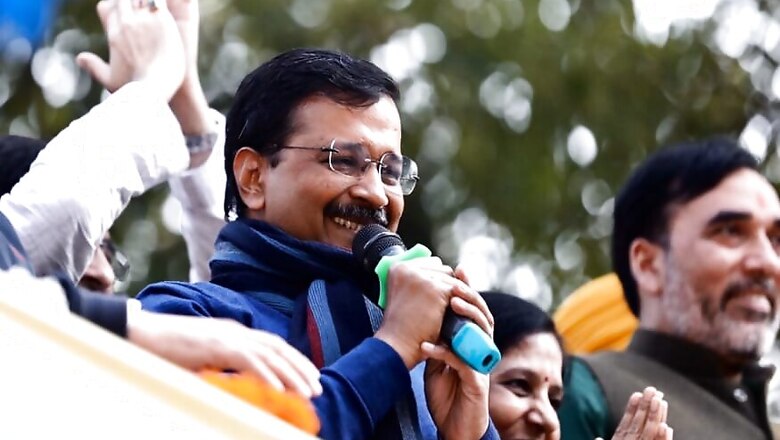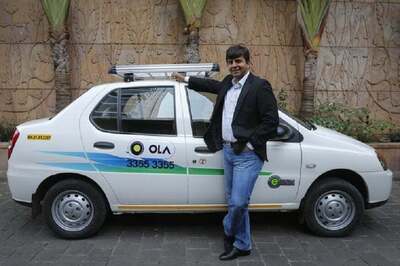
views
Trends emerging from the Delhi assembly polls paint an interesting portrait of electoral politics in the capital. Most exit poll predictions came true and the Aam Aadmi Party (AAP) got a comfortable majority to form the government yet again, winning 62 of the total 70 seats. The Bharatiya Janata Party (BJP) won the remaining eight seats. The Congress, once more, failed to open its account. The party’s performance hit a new low in Delhi as it got less than 5% of the total votes polled and 63 of its candidates lost their deposits. The Congress, which ruled the capital for 15 years on the trot under late chief minister Sheila Dikshit, drawing a blank for the second consecutive assembly election here is one of the key factors in AAP’s big sweep.
The polls will be remembered for many reasons. The opposition here made the same mistake which the opposition had made in the general elections last year. In 2019, the Congress ran a negative campaign while the Narendra Modi-led BJP talked about its development work and focused on key issues which people were able to visualise and appreciate that their life had improved. So they reposed their faith in the National Democratic Alliance (NDA) government.
Repeat of May 2019, But against BJP
The prime focus of AAP’s campaign this time was on basic issues and it helped convince voters that work had been done in areas like water, education, electricity and health. These four things affect the life of common people on a large scale and are indeed among basic necessities. The AAP model of governance and its learning is based on central government initiatives led by PM Modi who made toilet, electricity, housing and health as pillars of his model of development and key issues before the 2019 general elections. The BJP kicked off its campaign by challenging the Delhi government’s policies on quality parameters, but that did not work. In the capital, many people are still struggling with issues of accessibility to primary services. So, they were not able to appreciate the quality parameters, or be convinced on issues to vote for the BJP.
Cadre vs Cadre
The BJP has a massive cadre base in most parts of the country now and is known for its connectivity. But AAP outperformed it this time and succeeded in convincing a majority of the people to vote for it. Though union home minister Amit Shah ran a comprehensive door-to-door campaign for the BJP which created much hype, it couldn’t produce the desired result as it started quite late. On the other hand, AAP has mobilised its cadre through the year and so managed to form a better connect before the poll schedule was announced.
Lack of Local Leadership
This election has once again exposed the weak state leadership of the BJP. Like Jharkhand, this is another state where central leaders could not groom charismatic local faces. The state leaders are totally dependent on the central big guns for their electoral future. They do not have a vision for Delhi. The BJP manifesto was more of a reaction to the AAP one. The saffron party couldn’t present any alternative vision to the Delhi people and that should be a cause for concern.
Too Much Focus on Social Media
Social media alone cannot help any political party win the elections. Though, digital canvassing is spreading its influence and bridging many gaps, the people of India still believe more in personal relations and bonding with local leaders. Social media can be an enabler but not the sole route to electoral success. It can help influence people and spread information. The seats that the BJP has won came due to groundwork by local leaders and their rapport with the people. After Haryana, in Delhi too, social media warriors lost the battle.
Ridiculing Opponent Works
Ridiculing the opposition is one of the tactics perfected by the BJP. It spurred creation of memes on Rahul Gandhi so people cannot form a positive image of him. A flood of mocking videos, jokes and parodies have been made on the Congress leader, creating a persona of him as a non-serious leader, and he has been unable to come out of it. AAP has done the same thing with BJP Delhi unit chief Manoj Tiwari and presented him in a way so that people couldn’t take him seriously. Like the ‘Pappu’ tag with Rahul, the ‘Rinkiya ke Papa’ stamp was affixed to Tiwari.
Power of Public Perception
Also, the Delhi elections established another point that honesty, perceived or real, is still a big draw in Indian politics. Kejriwal is still seen as an honest man and people believe in his clean and non-corrupt image. Some critical videos have been released by his old colleagues and some allegations have also been made, but they didn’t have much effect.
Family Man
Be it Modi, Rahul, or any other political leader, they all show that they believe in the family system which is their strength. Kejriwal introduced his wife and children in the electioneering in a way that portrayed him as a family man. Because the Indian public has a fondness for the ‘ideal family system’ and try to relate to their leaders, this helped turn the voters in favour of AAP.
(The author is director of Center of Policy Research & Governance. Views expressed are personal.)




















Comments
0 comment